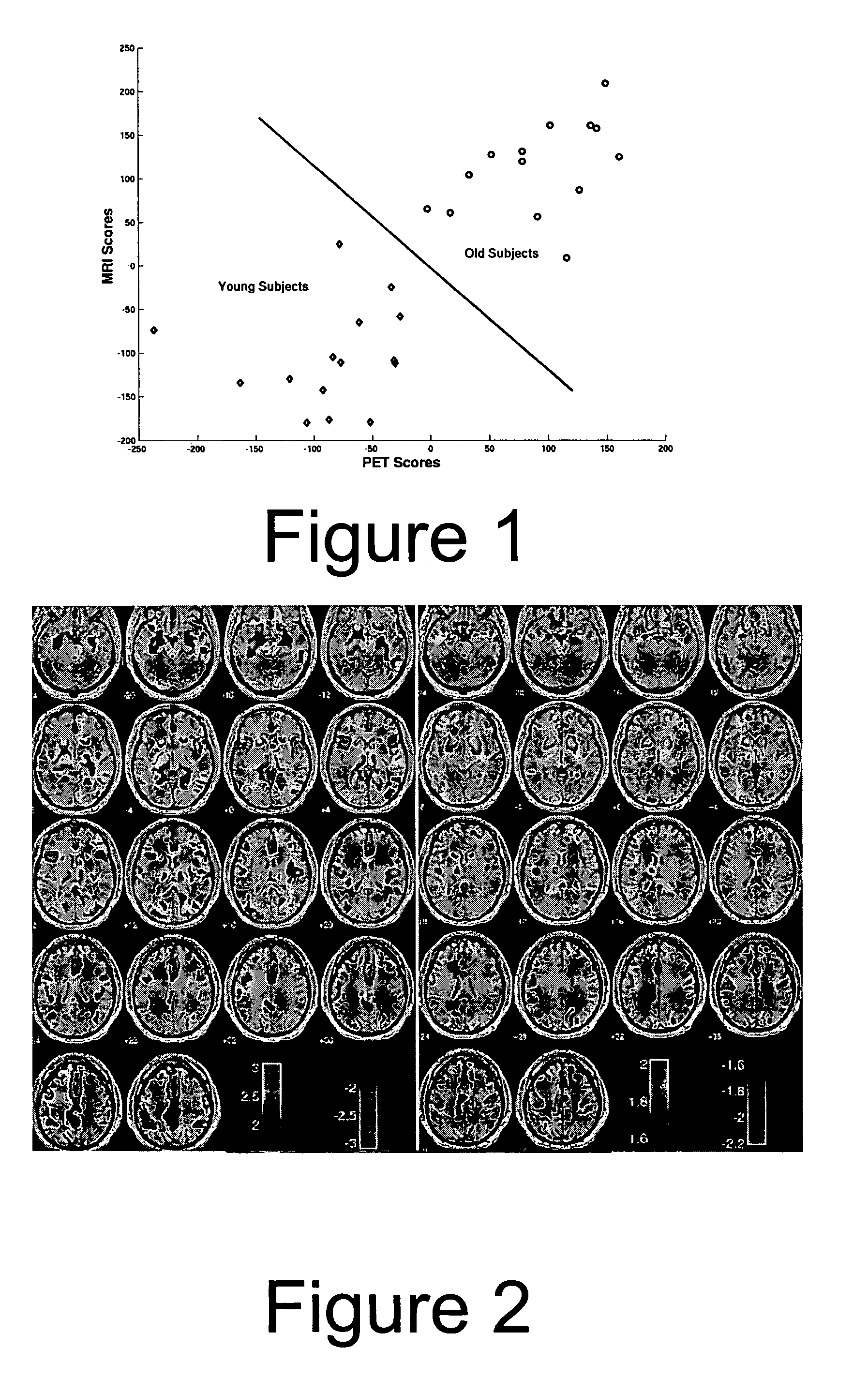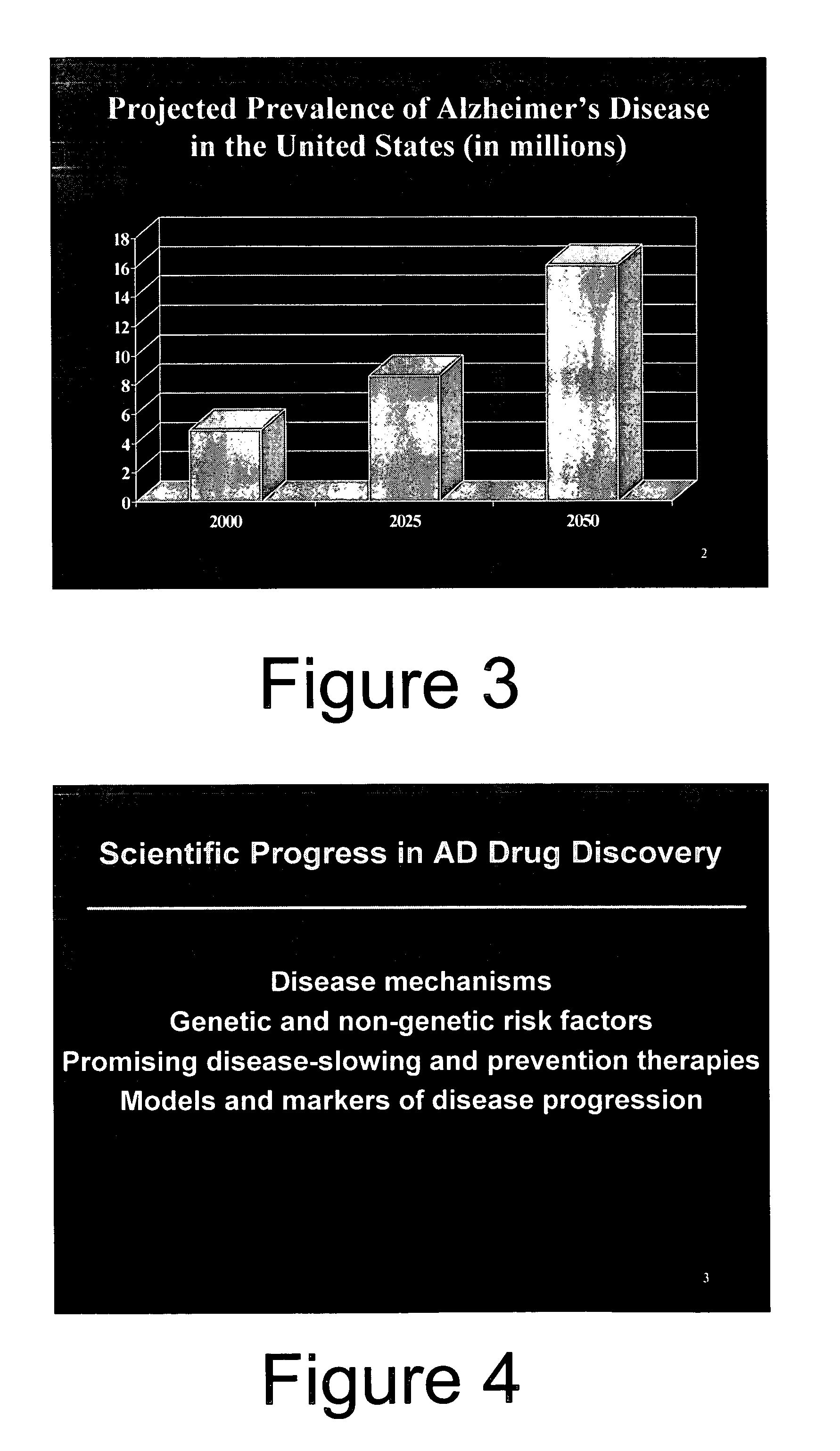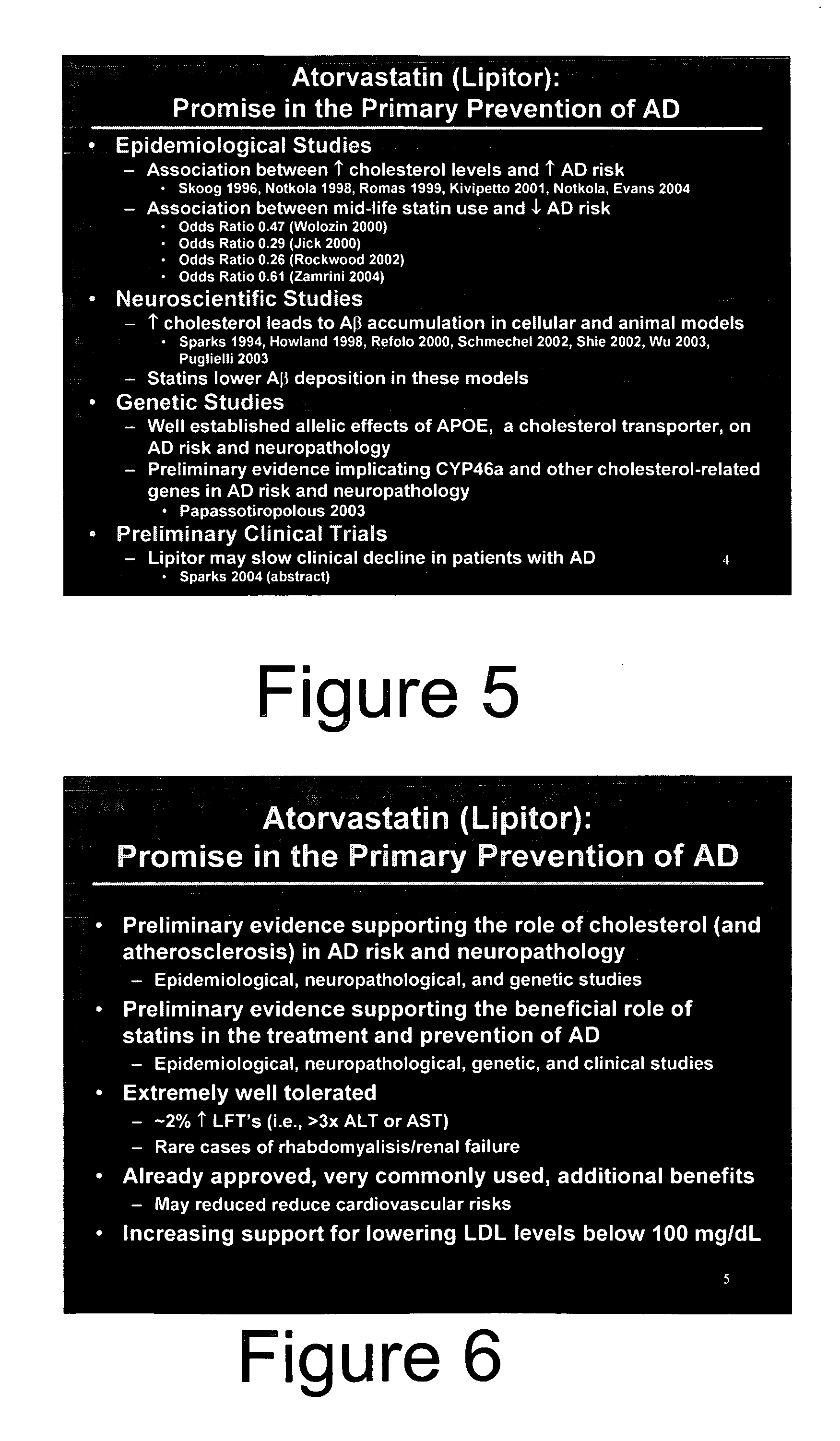Evaluation of a treatment to decrease the risk of a progressive brain disorder or to slow brain aging
- Summary
- Abstract
- Description
- Claims
- Application Information
AI Technical Summary
Problems solved by technology
Method used
Image
Examples
Example
[0015] In view of the foregoing, it is an object of the present invention to improve various problems associated with the prior art. To this end, an object of the invention is to provide a method to evaluate putative therapies to improve clinical outcomes in patients at risk for brain-related disorders. It is to be understood that the following description is exemplary and explanatory only and is not restrictive of the invention, as claimed. Thus, the present invention comprises a combination of features, steps, and advantages that enable it to overcome various deficiencies of the prior art. The various characteristics described, as well as other features, will be readily apparent to those skilled in the art upon reading the following detailed description of the preferred embodiments of the invention, and by referring to the accompanying drawings.
[0016] Longitudinal brain imaging studies have been conducted with ε4 homozygotes, ε4 heterozygotes (all with the ε3 / ε4 genotype), and ε4...
PUM
 Login to View More
Login to View More Abstract
Description
Claims
Application Information
 Login to View More
Login to View More - R&D
- Intellectual Property
- Life Sciences
- Materials
- Tech Scout
- Unparalleled Data Quality
- Higher Quality Content
- 60% Fewer Hallucinations
Browse by: Latest US Patents, China's latest patents, Technical Efficacy Thesaurus, Application Domain, Technology Topic, Popular Technical Reports.
© 2025 PatSnap. All rights reserved.Legal|Privacy policy|Modern Slavery Act Transparency Statement|Sitemap|About US| Contact US: help@patsnap.com



